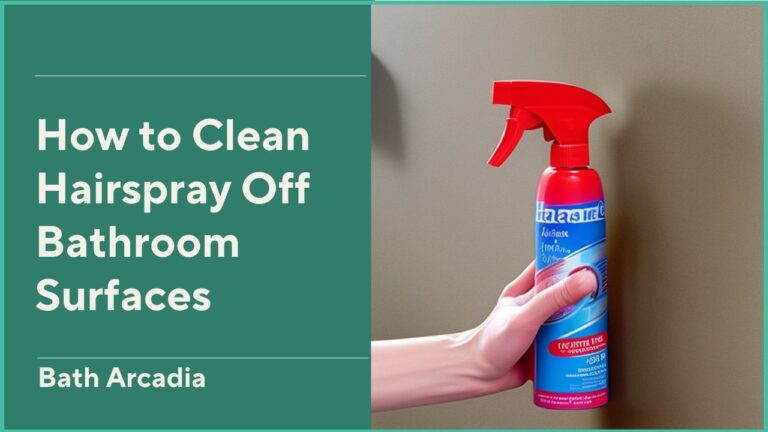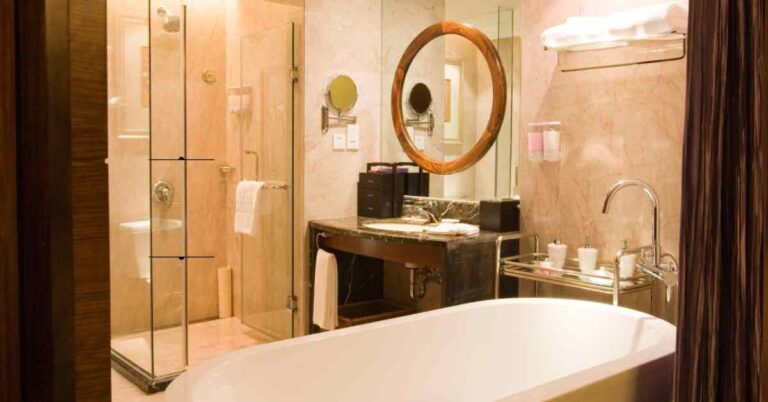For screed, your bathroom floor is critical in achieving a sturdy and level surface for your chosen flooring material. Whether renovating your bathroom or building a new one, our step-by-step guide will help you understand the purpose and benefits of screening.
Learn about the right materials, expert tips, and alternatives to decide on a durable and beautiful bathroom floor.
Understanding Screeding
- What is Screeding? You can thank screeding if you admire a perfectly level, smooth bathroom floor. Discover the process of creating a level surface using a mixture of sand and cement to prepare the final flooring material.
- Importance of a Level Bathroom Floor A properly leveled bathroom floor is essential for secure flooring installation and overall structural integrity. Learn how screeding can prevent tripping hazards and ensure your bathroom stands the test of time.
Benefits of Screeding
- Enhancing Durability Understand how screed enhances the durability of your bathroom floor by distributing weight evenly and reducing the risk of cracks in high-moisture areas.
- Providing a Smooth Surface Say goodbye to walking on wonky floors! Discover how screeding eliminates bumps and unevenness, providing a smooth surface for a relaxing bathing experience and easy maintenance.
Assessing the Need for Screeding
- Identifying Floor Issues Before you screed your bathroom floor, assess the existing condition for cracks, unevenness, or water damage that may require screeding to create a solid base.
- Considering Flooring Types Find out how the type of flooring you plan to install influences the decision to screed. Certain materials, like tiles, demand a level surface for proper installation.
Step-by-Step Guide to Screeding
- Preparing the Floor Get started by thoroughly cleaning the floor and repairing any damage before proceeding with screeding.
- Mixing the Screed Material Follow our expert tips on mixing your chosen screed product to the correct consistency for optimal results.
- Applying the Screed Layer Step-by-step instructions on pouring and spreading the mixed screed evenly across the floor ensures consistent thickness.
- Leveling and Finishing Check for levelness and make adjustments as needed. Smooth out the surface for a flawless finish before proceeding with flooring installation.
Choosing the Right Materials
- Cement-based Screeds Explore the traditional choice for bathroom floors, made with cement, sand, and water, offering durability and reliability.
- Polymer-modified Screeds Discover modern screeds with polymers for added strength and flexibility, perfect for areas prone to movement or cracking.
- Self-leveling Compounds Learn about quick and easy solutions for correcting uneven or sloping floors with self-leveling compounds.
Common Mistakes to Avoid
- Surface Preparation Avoid poor adhesion and uneven surfaces by properly preparing the floor before screeding.
- Mixing Ratios Ensure the best results by accurately measuring and mixing your screeding materials.
- Application Techniques Achieve a level and uniform finish by applying the screed with finesse and avoiding lumps or ridges.
Alternatives to Screeding
- Tile Backer Boards Consider using tile backer boards as an alternative for a solid and stable surface that supports tiles without screeding.
- Prefabricated Shower Bases Explore leak-proof and ready-to-install shower bases as an alternative to screeding for shower areas.
- Waterproofing Membranes Learn how waterproofing membranes offer watertight barriers without traditional screeding for wet areas.
Conclusion
For screed bathroom floor is essential for a long-lasting and safe flooring solution. Our comprehensive guide has equipped you with the knowledge to achieve a durable and level surface.
Whether you choose traditional cement-based screeds or explore alternative materials, make an informed decision to ensure a successful DIY bathroom renovation. Get ready to enjoy your bathroom with confidence and style!
FAQs
Screeding may not be necessary for every bathroom floor. It depends on various factors, such as the existing condition of the floor, the type of flooring you plan to install, and personal preferences. Assess the specific needs of your bathroom and consult with a professional if you’re unsure whether screeding is required.
While it may be tempting to skip the screeding process and install tiles directly on the existing floor, it is generally not recommended. Without proper screeding, the floor may not be level, leading to issues such as tiles cracking or uneven surfaces. Screeding provides a stable and smooth base for the tiles, ensuring their longevity and preventing future problems.
The duration of the screeding process varies based on factors like bathroom size, complexity, chosen screed material’s drying time, and the person’s expertise. On average, it takes a few days, including surface preparation, mixing, applying the screed, and allowing it to dry before proceeding with further flooring.
While DIY screeding is possible for those with experience, hiring a professional is recommended for the best results. Professionals ensure proper surface preparation, accurate mixing ratios, and precise application techniques, leading to a high-quality screeded floor that meets your requirements.
The thickness of the screed depends on the type of screed you use and the floor finish you choose. Generally, the screed should be between 15mm and 50mm thick.


